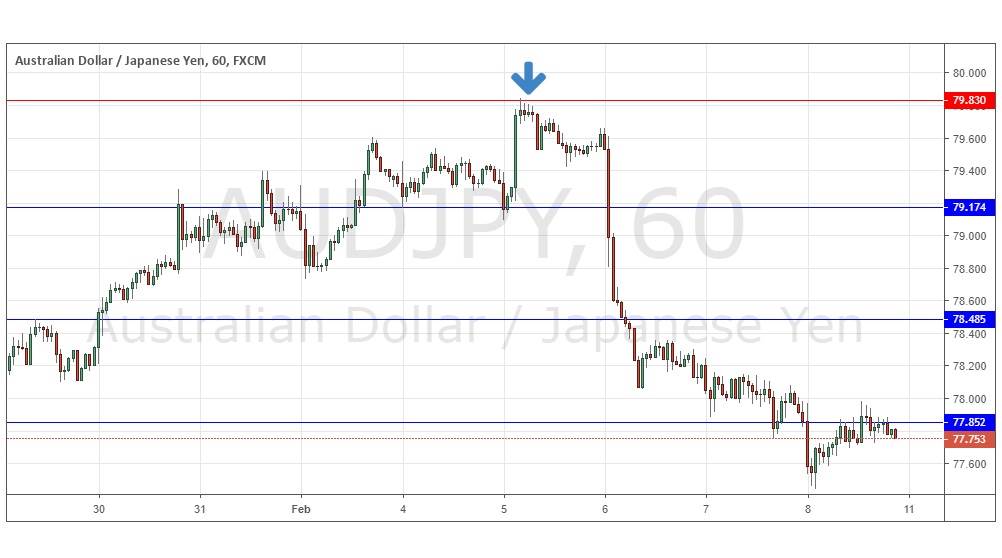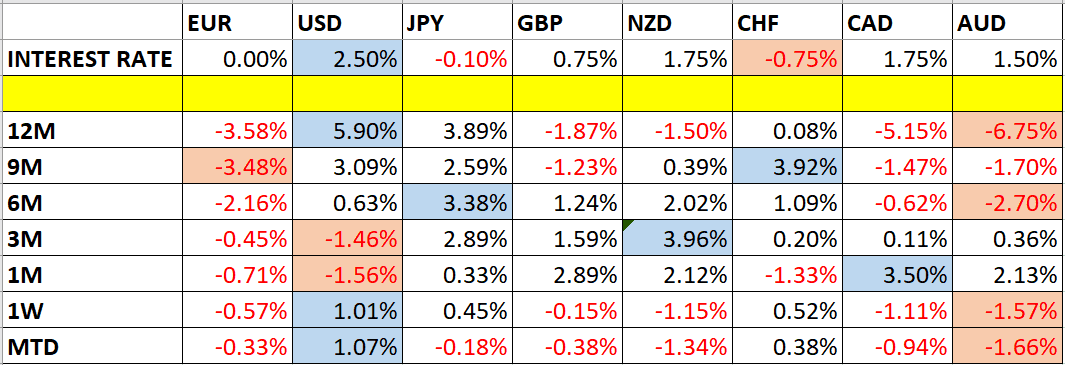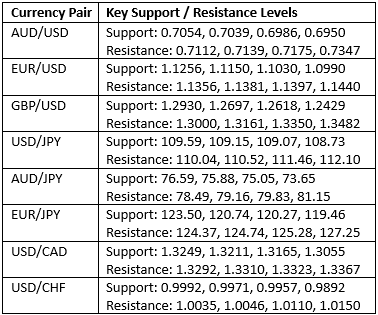This week we’ll begin with our monthly and weekly forecasts of the currency pairs worth watching. The first part of our forecast is based upon our research of the past 16 years of Forex prices, which show that the following methodologies have all produced profitable results:
- Trading the two currencies that are trending the most strongly over the past 3 months.
- Assuming that trends are usually ready to reverse after 12 months.
- Trading against very strong counter-trend movements by currency pairs made during the previous week.
- Buying currencies with high interest rates and selling currencies with low interest rates.
Let’s take a look at the relevant data of currency price changes and interest rates to date, which we compiled using a trade-weighted index of the major global currencies:
Monthly Forecast February 2018
For the month of February, we forecasted that the best trade would be long GBP/USD. The forecast’s performance so far is as follows:
Weekly Forecast 10th February 2019
We made no forecast last week, as there were no strong counter-trend moves last week. We again make no forecast this week.
About 56% of the important currency pairs or crosses moved by more than 1% in value over the past week. Volatility has increased and will probably be relatively high over the coming week too.
This week has been dominated by relative strength in the U.S. Dollar, and relative weakness in the Australian and New Zealand Dollars.
You can trade our forecasts in a real or demo Forex brokerage account.
Previous Monthly Forecasts
You can view the results of our previous monthly forecasts here.
Key Support/Resistance Levels for Popular Pairs
We teach that trades should be entered and exited at or very close to key support and resistance levels. There are certain key support and resistance levels that should be watched on the more popular currency pairs this week, which might result in either reversals or breakouts:
Let’s see how trading one of these key pairs last week off key support and resistance levels could have worked out:
AUD/JPY
We had expected the level at 79.83 might act as resistance, as it had acted previously as both support and resistance. Note how these “flipping” levels can work well. The H1 chart below shows the how the price rejected this level during the Asian session last Tuesday, marked by the down arrow in the price chart below, forming multiple bearish inside candlesticks which broke down and then quickly fell decisively. Such candlestick structures are often useful indicators of reversals when their wicks or the wick of the structure rejects key levels. This trade has been extremely profitable, achieving a maximum positive reward to risk ratio so far of more than 14 to 1.

That’s all for this week. You can trade our forecasts in a real or demo Forex brokerage account to test the strategies and strengthen your self-confidence before investing real funds.



